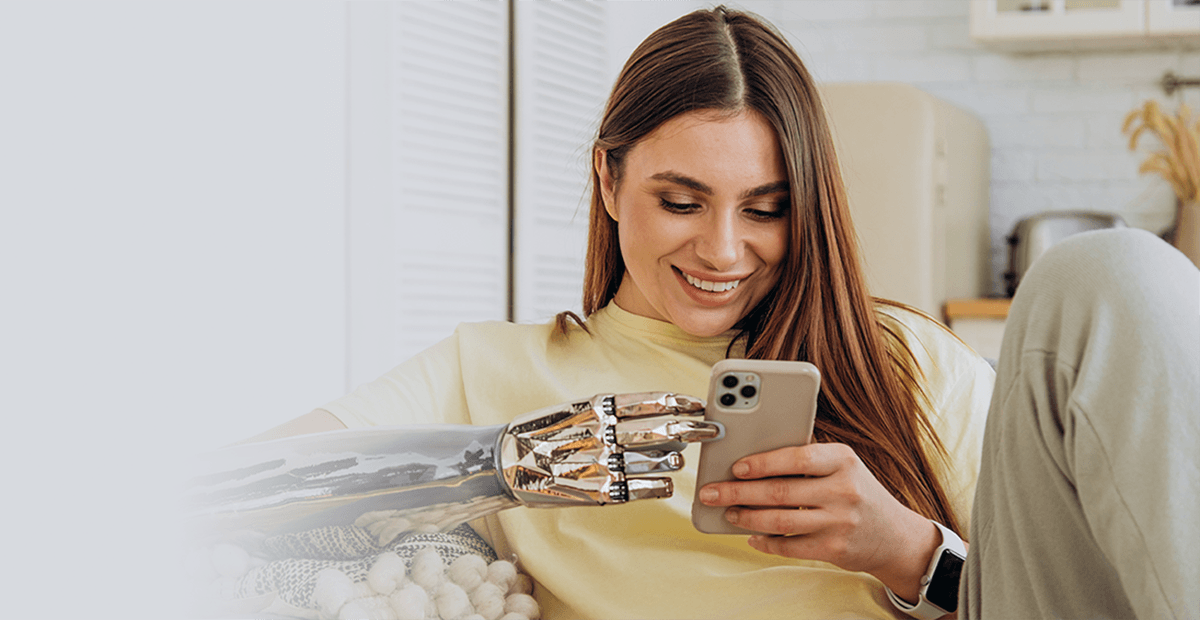Accessibility in Application Design: Ethical, Inclusive and Good for the Business

Today marks the tenth annual Global Accessibility Awareness Day, and as noted by the Global Accessibility Awareness Day Group (GAAD) it’s a day, "…to get everyone talking, thinking and learning about digital access and inclusion, and the more than one billion people with disabilities/impairments."
Earlier in my career, I was fortunate enough to spend several years in Japan. I got to know an extraordinary man—Mitsuhiro Iwamoto—who is blind. I marveled at his skill in navigating Tokyo’s swarming streets and intricate mass transit system. In 2019, Mitsuhiro made headlines as the first blind sailor to complete an 8,700-mile (14,000 km) non-stop Pacific crossing. To get in shape for the trip, he became a triathlete.
Mitsuhiro Iwamoto doesn’t let his eyesight get in the way of realizing his dreams. As digital technologists and creators, it’s imperative that we keep digital access and inclusion in mind so people like Mitsuhiro can reach as high as they wish, whether they are customers or employees.
The Accessibility Imperative
The ethics of digital accessibility for people like my friend Mitsuhiro are crystal clear. But beyond the simple human decency involved, there are solid business reasons why accessibility should be part of your application strategy:
- Market share—Data indicates that 1 billion people worldwide have some form of disability
- Compliance—As legislation around the globe is moving in a direction where accessibility is becoming mandatory
- User experience—Accessibility guidelines designed to help people access and use your website or app more easily can also improve usability and benefit all users.
- Engineering—Many of the good practices for accessibility are good engineering and design principles in general. Often, it is poorly written code that is not accessible. For those of us who strive for mastery of our craft, accessibility should be part and parcel of good design.
- Reputation—Having a more accessible website or app than your competition is a competitive advantage and can also help create goodwill towards your brand
There are many more.
RELATED ARTICLE ON THE TELERIK BLOG
Accessibility Best Practices
While I’m not an accessibility expert, I want to share my thoughts about accessibility from a conceptual perspective. I’ll introduce the concept of holistic accessibility and relate to broader concepts of empathetic design and digital ethics, and how that can play a part in your corporate social responsibility (CSR) and environmental, social and governance (ESG) initiatives.
For the purposes of accessibility support, there are four overarching disability types—hearing, sight, motor and cognitive. Each type includes a multitude of conditions and cause different challenges when interacting with the web or applications. Most of these practices are not about the underlying technology we use but about how we design our software. This means that everyone involved in the development process can contribute to better accessibility. Here is a short overview of some best practices.
Hearing (Auditory) Disabilities
The best way to help these users is to avoid relying only on sound to convey critical information. Instead, add another media in parallel for support, such as subtitles with full captions for videos, transcripts for audio. Subtitles and transcripts should be full and not miss critical lines. For both video and audio, make sure background noise is minimized.
Visual Disabilities
The primary way to accommodate for low vision is to have a readable interface. UI elements need to be big and clear. High contrast between elements and colors in the UI will also help people with low vision. Blind people use screen readers. These applications parse the code and describe it to the user using natural language, calling for careful, thoughtful coding.
Motor Disabilities
Fast and/or repetitive actions, actions that require holding a button, actions with time limits—all of these are challenging for people with motor disabilities. In the case of websites, the general rule is that you need to design a website so a user would be able to conveniently use it both with a keyboard only and with a mouse only.
Cognitive Disabilities
Simplicity is key. Make scenarios simple and interfaces simple and free of clutter. Use simple language, and clear instructions with concise information. Avoid time limits that can put unnecessary pressure on the user.
There are many more considerations—from colorblindness to sensory overload. An excellent, in-depth guide to accessibility for designers is the Accessibility Guidebook for Web Development.
Digital Ethics and Empathy
Given the scope of accessibility both inside and outside organizations, it’s clear that they need to take a comprehensive or holistic approach, but how does that relate to corporate social responsibility (CSR) and environmental, social and corporate governance (ESG) initiatives?
- Corporate social responsibility aims to contribute to societal goals of a philanthropic, activist, or charitable nature by engaging in or supporting volunteering or ethically-oriented practices
- Environmental, social, and corporate governance refers to the three central factors in measuring the sustainability and societal impact of an investment in a company or business
They sound similar, but CSR is about providing accountability within your organization while ESG aims to collect and measure metrics relevant to your business objectives and stakeholders.
Meanwhile, diversity, equity and inclusion (DEI) initiatives are multifaceted and link to both. Digital accessibility is an important part of the DEI discussion at it relates to accessing resources that can put people on a more level playing field.
All these efforts are not only good for people but good for the business, as we discussed above in The Accessibility Imperative. And again, it’s just the right thing to do. That brings us to digital ethics and empathy, which expands the notion of accessibility to a more holistic and sustainable business approach.
Holistic Accessibility
While “ethical AI” is in the news based on the potential societal impact that could be introduced by deliberate or non-deliberate ill-intent, if one were to take a broader view of digital ethics/empathy, it’s interesting to consider the scope. Holistic accessibility is a key part of ethical design, meaning that in addition to delivering experiences that exceed the needs of the user from a functional perspective, it’s necessary also to understand human-centered design and the need for accessibility to assist users with special needs. Its components include:
- Ethical development lifecycle considerations—One way to ensure that ethics and empathy are prioritized and managed effectively is to think through the entire application development lifecycle as well as all output or supporting capabilities. This effort should consider people, process and technology.
- Ethical research and design—Eliminating unconscious bias and expressing empathy are key in research and design
- End user/customer experience ethics—This multifaceted component includes but is not limited to mobile app considerations such as privacy and data collection, accessibility and societal factors—such as improving quality of life, closing the digital divide and human displacement through automation
- Organizational and team ethics—Ingraining ethics and empathy into organizations and teams
- Ethical intelligence (ML/AI)—Taking care that AI/ML intelligence is free from the unconscious bias of its designers
- End-user privacy—a key pillar to ethical design
- Legal and compliance—All legal and compliance efforts relating to authorship, regulatory and software licensing are all aspects of ethical development
For organizations and designers, Accessibility Day should be every day. Accessibility is part of good application craftsmanship and good corporate practices relating to CSR, ESG, DEI, digital ethics and empathy.

